Ashdown Engineering CTM 300 Handleiding
Ashdown Engineering
Receiver
CTM 300
Bekijk gratis de handleiding van Ashdown Engineering CTM 300 (4 pagina’s), behorend tot de categorie Receiver. Deze gids werd als nuttig beoordeeld door 98 mensen en kreeg gemiddeld 4.8 sterren uit 49.5 reviews. Heb je een vraag over Ashdown Engineering CTM 300 of wil je andere gebruikers van dit product iets vragen? Stel een vraag
Pagina 1/4


2www.ashdownmusic.com
Ashdown Ampliers reserve the right to change specications without notice. E & O E. All contents © Ashdown 2012.
USER MANUAL
CTM 300 / CTM 100
Thank you for choosing an Ashdown Valve Series amplifier. To ensure
that you receive the full benefits of the Ashdown warranty, please
register your amplifier at www.ashdownmusic.com
WARRANTY
Your amplifier is covered by a one year warranty, against defects in
materials and workmanship, for the original purchaser. Ashdown will, at
their discretion, replace or repair any product or part thereof, which is
found by Ashdown to be defective. This warranty shall not apply to the
damage of covering, fittings or finishes when affected by carelessness,
accident or extreme climate changes. Nor does it apply to normal wear
and tear of parts such as valves, fuses, light bulbs, speakers, controls etc.
In the unlikely event of any defect, please contact an authorised
Ashdown dealer. All transport charges are to be pre-paid by the Owner.
Unless your purchase is registered on-line, normal country warranty laws
apply.
IMPORTANT SAFETY INSTRUCTIONS
This Ashdown amplifier has been designed to provide you with many
years of faithful service – on the road, in a studio or in a domestic
environment. By following the rules set out below, you will ensure
that the unit functions safely.
Valve (tube) instrument amplifiers contain very high voltages and fragile
glass tubes and should therefore be handled with care. A number of
important precautions which must be observed are set out below.
Before using the amplifier, run through the check list below. If you are
in any doubt about any aspect of the amplifier’s operation, stop using
it immediately and do not resume operation until the amplifier has been
thoroughly inspected by a qualified technician.
1) Storage and moving
When your amplifier is not in use make sure that the power cord
is unplugged from the mains outlet, and that all leads are removed
from the amplifier, including jack leads and footswitch leads. Jack
socket connectors are self-cleaning, so the process of plugging in
and unplugging the leads when not in use will ensure that the internal
contacts will be cleaned when you plug in again.
Store your amplifier in a warm, dry place away from moisture and
condensation. A motor vehicle or cellar may look dry but condensation
can form inside the unit causing short circuits and possible electric shock.
If you suspect the amplifier may have become exposed to moisture,
move it to a warm dry place and leave it to dry out for at least 48 hours
before attempting to use it.
Condensation can also occur when you move the amplifier from a hot
humid place (such as a nightclub) to a cold place (like a motor vehicle).
In such instances, always move the amplifier into a warm dry room to
prevent damage.
When moving the amplifier, handle it as carefully as you would your
instruments. Although solidly built, an amplifier is easily damaged
by shock, so be careful not to drop it or allow it to fall over. Use a
protective cover to protect the finish and, if you are transporting it with
other equipment, make sure that the amplifier is on a solid floor at the
bottom of the pile.
Amplifiers are heavy. Take care when lifting, always use the handles
fitted to the amplifier to move it, and get help if you have to lift the
amplifier to a greater height than you feel comfortable with.
Never attempt to operate the amplifier after it has been dropped. Take it
to a qualified technician and have it checked before using it again.
2) Leads and plugs
Your amplifier contains possibly lethal voltages and must therefore be
connected to the mains using the correct power cord, which is a three
terminal type with a ground connection.
The power cord supplied with the unit should be of the correct type. If it
does not fit your mains outlet consult your dealer or a qualified electrician
for advice before attempting to use the amplifier.
Never modify the power cord or attempt to use it with a two pin outlet.
Store all your leads in a dry case and take care when packing them
away. All leads, including guitar leads, are easily damaged with
careless handling, so it is a good idea to carry a spare lead of every
type you use. Flexible power cords get damaged very easily. At the first
sign of damage, discard it and purchase a new one. Always replace
the power cord with one of the same type. Moulded cords are the best
choice with both plugs permanently fitted to the cord.
When using your amplifier and other equipment it is a good idea to
connect to the supply using a unit known as an R.C.D. These units are
not expensive and offer the user additional protection against electric
shock. An electrical shop should be able to supply you with a suitable
unit.
3) Before Use
Inspect your amplifier for damage before use. Check each lead for
damage before you plug them in to the amplifier, and ensure that the
loudspeaker is connected before you switch the amplifier on.
Never try to operate the amplifier without the speaker connected. If
you do, serious damage to the amplifier will result which will be very
expensive to repair.
Double check the connections you have made to your amplifier and
make sure you have connected the speaker to the correct outlet socket
that matches the cabinet you are using. The impedance of the speaker
is important and is usually shown on a plate affixed to the back of the
cabinet, so if the cabinet is 16R (Ohms) then you plug into the 16R outlet
on the amplifier.
4) Using the amplifier
When you set the amplifier up for use, it is important that you adhere to
the following rules:
Place the amplifier away from sources of heat, including radiators, etc.
The amplifier itself will get hot in normal use.
Make sure that all the grilles on the amplifier are not obstructed in any
way so that cooling air can circulate through the amplifier. Do not place
anything on or behind the amplifier that might restrict the flow of air. This
includes items of clothing, or other equipment.
WELCOME TO ASHDOWN VALVE BASS AMPS

4www.ashdownmusic.com
FRONT PANEL FACILITIES
INPUTS - There are two instrument inputs marked LOW and HIGH. The LOW input is highly sensitivity and also high
impedance to suit the output from PASSIVE (Low Output) basses - The HIGH input is low sensitivity and lower impedance to
suit the output from ACTIVE (High Output) basses. Plugging an active (High Output) bass into the LOW input will overload the
input, creating a fatter, warmer and more distorted sound. Experiment by plugging your bass into either input to achieve the
desired sound.
EFFECTS SEND AND RETURN - These 1/4” jack sockets should be used to connect to an external effects device or pedal board.
The EFFECTS SEND output should connect to the INPUT of the effects unit, and the output of the effects unit should be connected
to the EFFECTS RETURN input.
EQ CONTROLS - Use the MIDDLE, BASS and TREBLE controls to effect the overall tone of the sound. The MID SHIFT switch
causes the MIDDLE control to operate on higher frequencies in the up position, and lower frequencies in the down position.
The BASS SHIFT switch causes the BASS control to operate on deeper frequencies in the up position, and less deep frequencies
in the down position. The BRIGHT switch adds an overall brightness to the sound when in the up position. (Note: The BRIGHT
switch is not effective when the GAIN control is set to full).
GAIN - This controls the level of the signal sent to the MASTER section. To achieve a cleaner sound, turn the GAIN control down
and the MASTER up. To achieve a richer, more distorted sound, turn the GAIN control up and the MASTER down.
MASTER - This controls the overall output of the amplifier.
MUTE - In the in position, this switch mutes the out put of the amplifier (useful for tuning, etc.).
PRE/POST - This switch determines whether the signal from the DI OUTPUT is taken before/PRE the EQ section (in position) or
after/POST (out position).
VU METER - The VU meter provides a visual indication of the output level of the amplifier. It also acts as a bias meter, please
see the following page for more details.
REAR PANEL FACILITIES
SPEAKER OUTPUTS - There are dedicated Speakon connectors for 2, 4 and 8! load speaker cabinet configurations. It is
important that the correct output or outputs are used to match the impedance load of your cabinets. Please refer to the
diagrams later in this manual.
VU
Front Panel
Rear Panel
Ashdown Ampliers reserve the right to change specications without notice. E & O E. All contents © Ashdown 2012.
USER MANUAL
CTM 300 / CTM 100
Product specificaties
| Merk: | Ashdown Engineering |
| Categorie: | Receiver |
| Model: | CTM 300 |
Heb je hulp nodig?
Als je hulp nodig hebt met Ashdown Engineering CTM 300 stel dan hieronder een vraag en andere gebruikers zullen je antwoorden
Handleiding Receiver Ashdown Engineering

3 Juli 2023

6 Juni 2023

26 Mei 2023

24 Mei 2023

24 Mei 2023

22 Mei 2023
Handleiding Receiver
- Vivolink
- Ocean Matrix
- Comica
- Insignia
- Graupner
- NAV-TV
- Earthquake Sound
- Bresser
- MEE Audio
- Seco-Larm
- Taga Harmony
- Marmitek
- Vocopro
- Hifonics
- NAD
Nieuwste handleidingen voor Receiver
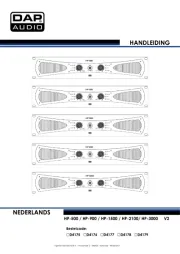
16 September 2025

16 September 2025
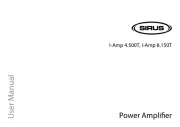
10 September 2025
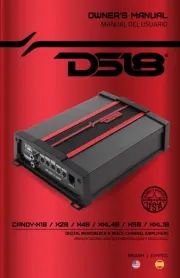
8 September 2025
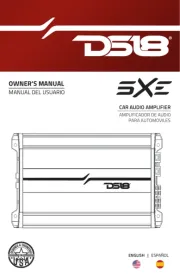
8 September 2025
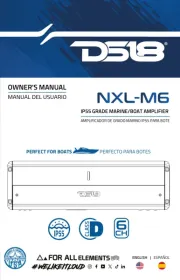
8 September 2025
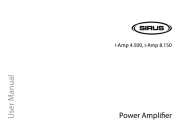
8 September 2025
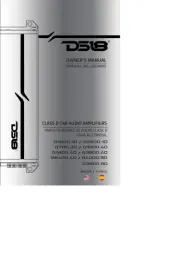
8 September 2025
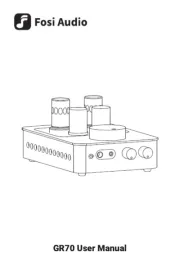
2 September 2025
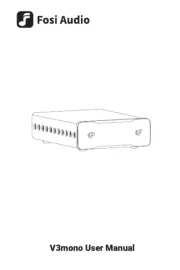
2 September 2025

